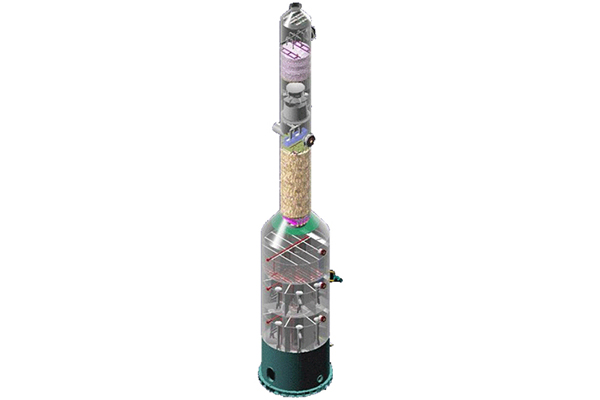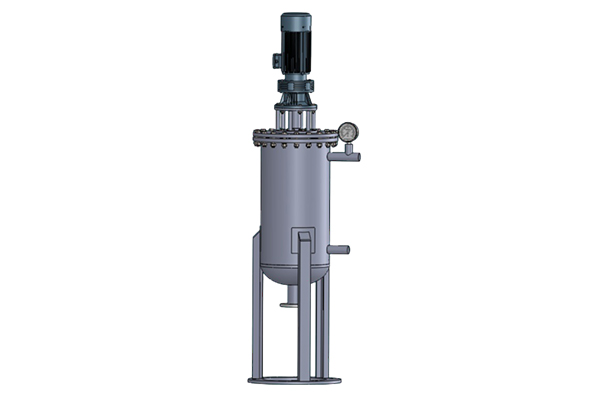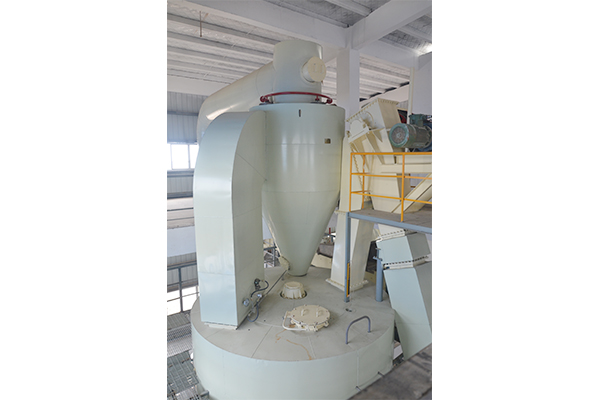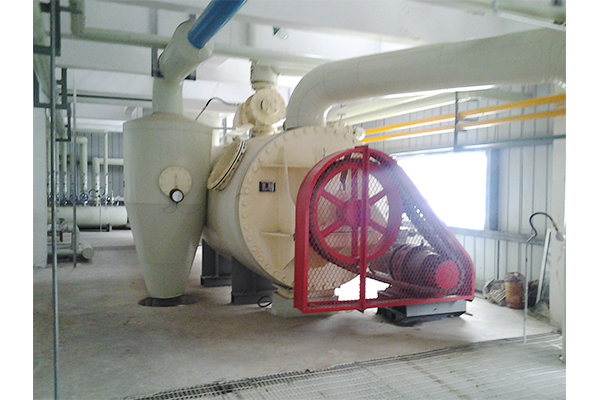How does the multi-layer filtering structure of the mixed oil filter achieve the step-by-step interception of various impurities in the mixed fuel?
Release Time : 2025-07-17
The multi-layer filtration structure of the mixed oil filter is the core design for dealing with the complex impurity system of mixed fuels. Through the "gradient interception" strategy, impurities of different particle sizes and chemical properties (such as particulate matter, colloid, water, acidic substances, etc.) are separated step by step in different filter layers, which not only avoids the failure of a single filter layer due to overload, but also accurately matches the diversity of impurities in the mixed fuel. The realization of this step-by-step interception depends on the characteristic differences of each layer of materials, the pore size gradient distribution and functional synergy.
The first pre-filter layer plays the role of "coarse screening", mainly intercepting impurities with a particle size greater than 50 microns in the mixed fuel, such as rust particles brought in by the fuel storage tank, dust mixed in during the filling process, and larger colloid groups produced by the oxidation of biodiesel. This layer usually uses metal mesh or high-porosity polyester fiber to achieve preliminary purification through physical screening. Its key role is to reduce the load of the subsequent fine filter layer - if large particle impurities directly enter the deep layer, they may pierce the filter material or block the micropores, resulting in a sharp drop in filtration efficiency. For a mixed fuel containing 10% biodiesel, this layer can intercept about 30% of mechanical impurities, providing protection for subsequent filtration.
The second adsorption layer focuses on the removal of polar impurities, especially the water and polar colloids brought by alcohols (such as ethanol and methanol) in the mixed fuel. This layer mostly uses modified activated carbon or molecular sieve materials, and its porous structure (pore size of about 10-30 microns) has both physical adsorption and chemical affinity: the micropores of activated carbon can capture water to form hydrogen bonds, and the molecular sieve adsorbs carboxyl and hydroxyl groups in polar colloids through ion exchange. In ethanol-diesel mixed fuel, this layer can control the moisture content below 0.05%, avoid the formation of emulsions between water and fuel, prevent nozzle clogging and corrosion of metal parts.
The third fine filtration layer is the core of intercepting tiny particles, mainly targeting impurities of 2-20 microns, including soot particles produced by incomplete combustion of diesel, sludge particles formed by lubricating oil, and free fatty acid methyl esters in biodiesel. This layer is usually composed of composite glass fibers or nano-cellulose, and uses the "Depth Filtration" mechanism - irregularly arranged fibers form a maze-like channel to capture particles using interception, inertial collision and diffusion effects. Data shows that the interception efficiency of high-quality fine filter layers for 10-micron particles can reach more than 98%, which is crucial for protecting the precision parts of the high-pressure common rail system (such as the injector needle valve) because the matching clearance of such parts is often less than 5 microns.
The fourth chemical stabilization layer is responsible for neutralizing the acidic substances in the mixed fuel and inhibiting oxidation reactions. Its function is achieved by alkaline additives (such as calcium-based sulfonates) added to the filter material. Mixed fuels (especially models containing biodiesel) are prone to generate acidic substances such as fatty acids and sulfonic acids during storage and combustion. These substances will corrode the metal parts of the engine and accelerate the deterioration of the engine oil. The alkaline components of this layer can react with acidic substances to stabilize the pH value of the fuel in a safe range of 7.5-8.5. At the same time, the antioxidants in the layer (such as phenolic compounds) can capture free radicals, delay the formation of colloids, and further extend the effective life of the filtration system.
Although the fifth support and diversion layer does not directly participate in the filtration, it plays a key role in the stability of the stepped interception. It is usually composed of hard plastic or metal skeletons, and is designed with spiral guide grooves inside, which can evenly divert the fuel processed by the first four layers to avoid filter material fatigue caused by excessive local flow rate. When processing high-proportion mixed fuels (such as 30% biodiesel + 70% diesel), its diversion structure can reduce the turbulence caused by the viscosity change of the fuel, ensure the uniform load distribution of each filter layer, and prevent a certain layer from failing prematurely due to local overload.
The "gradient adaptation" between the layers is the prerequisite for the efficient operation of the stepped interception. From the first layer to the fourth layer, the pore size of the filter material gradually decreases from 50 microns to less than 2 microns, and the material shifts from mechanical strength priority to chemical activity priority, forming a progressive logic of "first physical, then chemical, first coarse, then fine". For example, if the pre-filtration layer is skipped and the fine filtration layer is directly entered, large particles of impurities will quickly block the micropores; if the adsorption layer is placed later, the water may have been emulsified with the fuel and it is difficult to be effectively removed. This optimization of the hierarchical order increases the total filtration efficiency of the mixed oil filter for complex impurities by more than 40% compared with a single filter layer.
Finally, the effect of the step-by-step interception is verified by the long-term maintenance of fuel cleanliness. In the test of a mixed fuel engine with a 10,000-kilometer use, the mixed oil filter with a multi-layer filtration structure has a total amount of impurities in the fuel after filtration that is 65% lower than that of a traditional single-layer mixed oil filter, the amount of carbon deposits on the fuel injector is reduced by 50%, and the engine power attenuation is controlled within 3%. This layered collaborative design not only plays the advantages of the characteristics of different materials, but also responds to the diversity challenges of mixed fuels through functional complementarity, becoming an important guarantee for engine reliability in long-term use.








